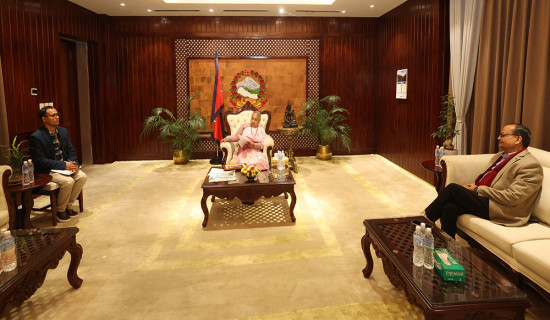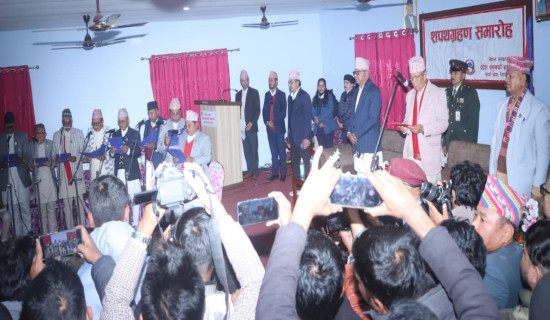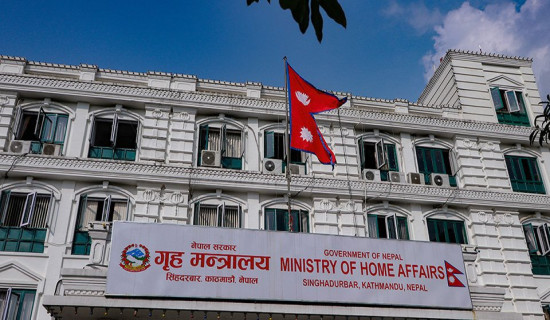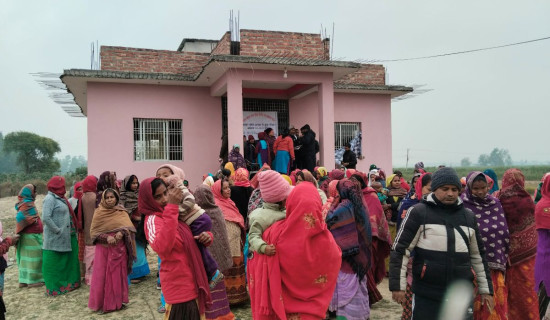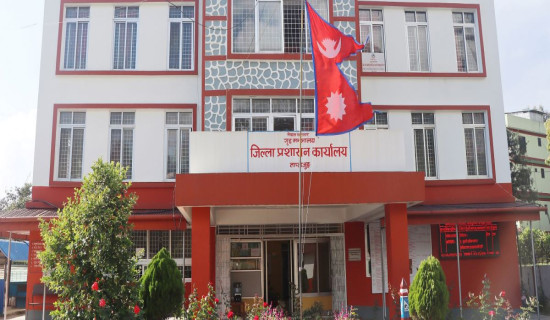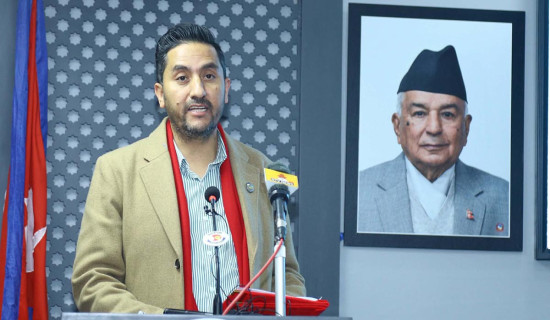- Wednesday, 7 January 2026
Technology Shaping Value System
Recently, this scribe observed a mother and child playing together at the Simra airport. The mother was talking to somebody on her mobile but while doing so she was also directing the camera of her mobile towards her toddler, who even without any instructions from the mother started posing for the picture. The mother then kept on shooting pictures and getting her toddler to keep posing. After a few minutes, the child got tired and started running away from the mother to start playing around the waiting room, but the mother kept following her and taking video shoots, probably to make a TikTok later.
The cultures, norms and value systems are parts of the human race which evolve and are adopted in our lifestyle. As time and technology change, these value systems and cultures also undergo modifications. Sociologists capture the changes in the society and describe the manner and extent of these changes. The general cultural changes that people face during their lifetime are triggered by new inventions, technological developments and interactions with people from various cultures and societies. The digital age has pushed people to adapt to the changes - sometimes without thinking and mechanically clicking and posting in the social media.
Mindset
It has also facilitated people in accessing information on their fingertips. However, how has it helped in changing mindsets? Observing the mother-child interaction at the Simra Airport, I started wondering about the implication of culture change in today’s Nepal. I had an interaction with journalists from all eight districts of Terai during a training organised by the Human Rights Journalist Association (HURJA) Nepal in Simra. The story shared by Sita Sapkota (name changed for privacy) from Kavre district can make one reflect on the fact that although the political and technological developments may have brought about several cultural changes in Nepal, the overall patriarchy and feudal culture were very much prevalent in the mindsets of the population.
Kavre is a neighbouring district of Kathmandu Valley, but when Sita was born, her father did not even see her face and left the family with the dry fruit packet that he had brought for his wife with the hope that she would give birth to a son. Later, Sita learnt about the reality that her father had refused to see her face after learning that his first born was a daughter when she started going to primary school. Her mother told her the story hoping that would make her interested in education. This had an impact in the mind of the little Sita and she decided that she would make it over for her mother by doing well in studies and making people realise that a daughter could support her parents just as a son could. There were several discriminations that she had to face in the various schools she went to. But finally, as she started excelling in her studies, she was respected by friends and the community, and she is now a well-established journalist in the country.
There are several other factual stories shared where students are still told not to touch their teachers or other members in the community because they belong to certain castes which are still seen as untouchables. Reflecting back over half a century in Nepal, it is interesting how the people have changed their culture of dressing, eating, studying and addressing each other. In a country like Nepal where there are different classes of people based on religion, caste, ethnicity, language, education and various diversities, it is a fact that those who are known to be the elites and well-off are emulated by those who have been marginalised in the societies. Especially due to the feudal and patriarchal system that was there before 1990, the mindsets of the people were very much attuned to hierarchy and controlled by the rulers, be it at state or household.
It will not be an exaggeration to state that together with this political change there has been a series of cultural changes based on the social behaviours of people. There has also been a stark revolutionary change brought about by the internet, which has practically changed the overall culture of communication. The Nepali children born in the 21st century are the digital age children. The culture of parents doing their own and their children’s photoshoot almost everywhere and putting on YouTube on their mobile while feeding their children so the child opens and swallows without noticing what is going in the mouth but looking at what is happening in the YouTube is a common phenomenal cultural change that is seen in the rural and urban households.
Social media
The social media is recognised by children before they have the intelligence to understand what it actually is. Culture is definitely a critical aspect of social life of the people. It is a patterned way of developing a collective thinking in communities which will pave the way to a new and modern way of thinking and lifestyle. However, the impact of political change and technology in the country does not seem to have impacted the mindsets and cultural behaviour that could actually make people aware of gender and social biases. Still a significant amount of work is required to bring an overall social and cultural change in Nepal.
Daughters like Sita and communities who were labelled untouchables before are still discriminated based on their sex and social identity. The rights established by the new constitution will only be effective when people start internalising the rights issues.
(Namrata Sharma is a journalist and women rights advocate. namrata1964@yahoo.com Twitter handle: @NamrataSharmaP )









